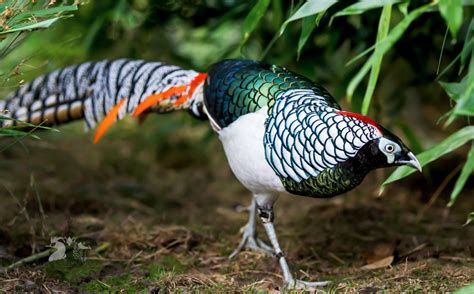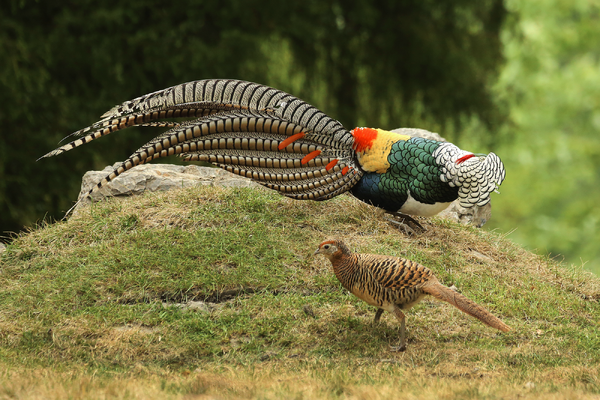Place or origin:
The Lady Amherst’s Pheasant is native to Burma and China but was introduced to England in 1828 by the Governor-General of Bengal, William Pitt Amherst. The Lady Amherst's pheasants were named after his wife, Countess Sarah Amherst, and were originally brought to Woburn Abbey in Bedfordshire, England. Here, they were interbred and hunted for sport. Sadly today, their numbers have dwindled in the U.K. to such a degree that they are considered extinct there. However there were occasional sighting, but they luckily still have a robust population in their native country.
__________________________________________________________________________
The size difference & color description:
As most other types of pheasants the males are larger and more vibrantly colored than the females. The males have a crest at the back of their heads that is a silver like color with black lacing which can be used in courtship when fanned out ward. The males also have a dark emerald green back and chest with black lacing, a non laced yellow back and blue wing feathers that have black lacing as well. Their tales have a zebra like pattern with thin orange feathers randomly around the tail.Females how ever have beautiful black laved feathers and long tail like the males, the their feathers are shades of orange, rusty red, drown, and yellows. the female tend to play a game of chase with the males to see how fast and healthy the males are as an extra stage of courtship.
Female________________________________________________________Male
| Female Size: | 26–27 inches |
| Male Size: | 51–68 inches (including tail feathers) |
__________________________________________________________________________
The confusing courtship:
The courtship behavior of Lady Amherst’s Pheasant is truly captivating. The male bird will run around the female creating a spectacular dance like chase to try and impress the female during the breeding season. When trying to impress a female the male doesn't just runn around the female he does many other this, this includes puffing out his chest, fanning his tail feathers and strutting around while emitting loud courtship calls. His colorful plumage will be on full display during this dance like chase for the female. If the female is impressed by the the male's plumage and ability to keep up with her every move, she will allow him to mate and then she will leave right after to go make a nest & brooder the eggs alone unlike quail like I've talking about before who become a pair and raise chick together.These images show the Males running after & courting the females while she starts running away



